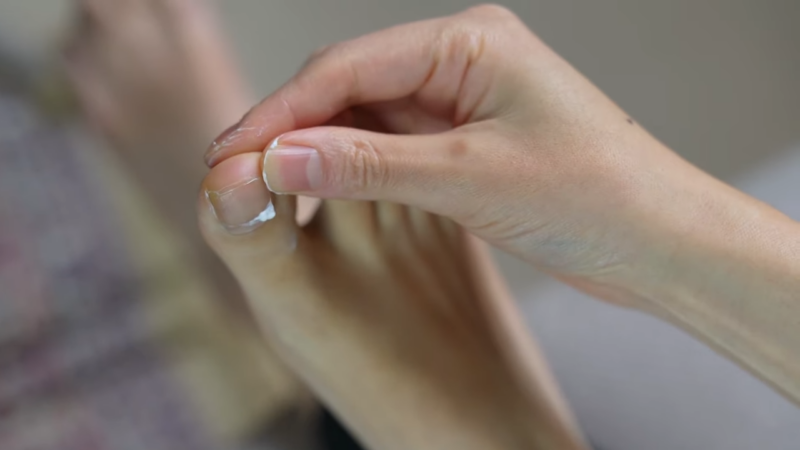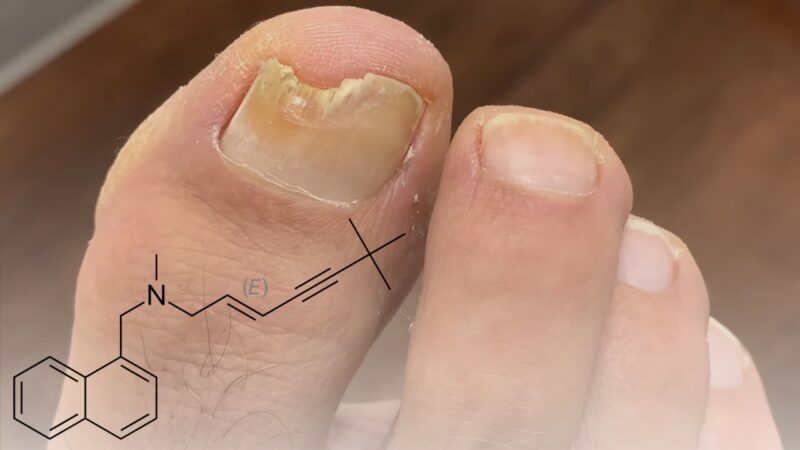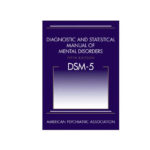Experiencing fungal infections can be challenging and uncomfortable, prompting many to seek treatments like terbinafine.
Recognizing physical signs of improvement is crucial when using terbinafine.
A reduction in symptoms such as redness, itching, and scaling of the skin indicates the treatment is effective.
Terbinafine solution may show results within a few days, while creams, gels, or sprays can take up to two weeks.
For those using terbinafine tablets, it may take several weeks to see significant changes.
Monitoring for potential side effects, which are usually mild and temporary, is also important.
Reduction in Symptoms

One of the first indications that terbinafine is working is a noticeable reduction in symptoms associated with fungal infections. Patients usually experience less redness, itching, and scaling.
These symptoms can be both uncomfortable and embarrassing, so their reduction is a positive sign. Consistent usage as prescribed typically leads to these improvements within a few days to weeks.
According to the NHS, both the cream and solution forms of terbinafine typically begin to show effectiveness within a few days. If symptoms do not improve, consulting with a healthcare provider is advised.
Fungal Culture Results
Another important indicator is the improvement in fungal culture results.
Healthcare providers often rely on laboratory tests to determine the presence of fungal organisms. These cultures help confirm whether the infection is being effectively treated.
A reduction in fungal colonies in lab results indicates that the medication is working.
The Mayo Clinic highlights that if there is no significant improvement within the expected timeframe, further evaluation may be necessary.
Continuous monitoring through these tests ensures that the treatment is on the right track.
Visual Improvement of the Affected Area

Visual changes in the affected area are also noticeable signs of terbinafine’s effectiveness.
Patients and healthcare providers often observe the skin or nails to track progress.
For instance, a nail affected by onychomycosis may begin to appear healthier, with less discoloration, and the surrounding skin may show reduced signs of infection.
Over time, the infected area begins to resemble normal, healthy tissue.
Regular visual checks help in documenting the healing process and determining the effectiveness of the medication.
Alleviation of Physical Discomfort
Lastly, the alleviation of physical discomfort serves as a crucial indicator of the medication’s success.
Fungal infections often cause significant discomfort, including pain, itching, and general irritation.
As terbinafine works to clear the infection, these discomforts diminish.
Monitoring pain levels and overall physical comfort can provide insights into the treatment’s progress.
Reports and personal observations from patients contribute valuable information regarding the effectiveness.
As the treatment continues, patients should experience noticeable relief in their symptoms, enhancing overall quality of life.
Monitoring Treatment Progress

These methods help in evaluating the efficacy of the medication and identifying potential side effects.
Periodic Medical Assessments
Regular medical assessments are crucial for patients on terbinafine. Physicians typically perform liver function tests, as terbinafine can cause liver abnormalities.
According to a study by JAAD, only a small percentage of patients experienced drug-induced liver injury, yet monitoring is essential.
Doctors also monitor blood counts to rule out hematologic changes.
Urinalysis and skin examinations may be conducted to assess for allergic reactions.
Such comprehensive assessments ensure any adverse effects are promptly identified and managed.
Patient Self-Reporting
Patient self-reporting plays a vital role alongside medical assessments. Patients should be instructed to report any new or worsening symptoms during treatment. Common side effects like gastrointestinal discomfort, headaches, or mild skin rashes are typically manageable.
More severe symptoms, such as persistent changes in taste, signs of liver distress (e.g., jaundice, dark urine), or allergic reactions like wheezing and swelling, should be reported immediately. Regular reporting enables prompt adjustments to treatment, ensuring both safety and effectiveness.
Potential Side Effects of Terbinafine

Common Adverse Reactions
Common side effects of terbinafine often include headache, rash, and diarrhea. Upset stomach, itching, and taste changes may also occur, making everyday activities uncomfortable. In most cases, these symptoms are manageable and may resolve as the body adjusts to the medication.
Less frequent reactions like muscle aches and general body discomfort might also be observed. Patients experiencing these issues should consult their healthcare provider for advice on symptom management.
Recognizing Allergic Reactions
Allergic reactions to terbinafine can present through symptoms such as swollen glands, tightness in the chest, and troubled breathing.
The appearance of ulcers, sores, or white spots in the mouth are indicators to seek immediate medical attention.
Swelling of the eyelids, face, lips, or tongue can indicate a severe allergic response.
Unexplained bleeding or bruising and pinpoint red spots on the skin are serious signs that warrant prompt consultation with a healthcare professional. These symptoms can escalate quickly and may require discontinuation of the medication.
Long-Term Side Effect Risks

Though rare, long-term use of terbinafine can lead to significant health concerns.
One of the most serious risks is liver damage, characterized by symptoms like light-colored stools, persistent loss of appetite, and upper right abdominal pain. Regular liver function tests may be recommended by healthcare providers to monitor this risk.
Another worrying, though infrequent, side effect involves blood disorders and severe skin reactions. Signs such as persistent fever, sore throat, fatigue, or unusual tiredness could indicate underlying blood issues. Patients should be vigilant and report any persistent changes in their health to their doctor.
Terbinafine treatment requires careful monitoring to minimize and address potential side effects efficiently.







